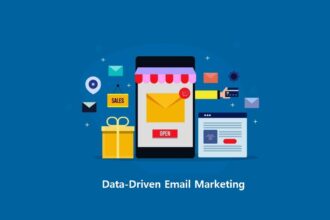Data is one of the most important assets for modern organizations. Companies are using big data in countless aspects of their business models, including the procurement processes. They are expected to spend $9.3 billion on supply chain data analytics in 2026.
Supply-side strategies play a pivotal role in determining the efficiency and end results of business operations. However, procurement departments have increasingly lagged behind in companies’ quests to digitize their workflow. Sophisticated automation solutions in the market aim to change that.
Below, we make a case for the digitalization and data-centric decision-making models for procurement processes.
1. It Allows You to Access and Monitor a Large Amount of Data
By 2027, organizations are expected to spend around $103 billion on big data. This statistic alone shows the importance businesses place on smart data access.
Deploying digital tools allows access to real-time data on your inventory, spending, purchase requisitions, and orders. Rather than scattered data points, you can access factual, smart data and monitor spending trends in the form of reports. Spend analysis can further let you identify saving opportunities and eliminate dark purchasing. Ease of monitoring also discourages fraudulent activities and makes them easy to identify if they occur. The enhanced visibility throughout your operations can let you strengthen your control over the entire procurement process.
2. It Ensures That You Use Resources Efficiently
To ensure efficiency, organizations need to manage their inventory, labor, and time the best they can. Digital procurement platforms can be set up to track stock levels, ensuring that needs are identified precisely. This reduces the underutilization of existing stock and lets you replace depleting items on time to avoid delays.
Automation of menial tasks like data entry and invoice matching frees up the workforce to focus on tasks of strategic nature. Not only does this provide a smarter working environment for your employees, but it also lets you cut down on labor costs as their working hours are reduced. In addition, human errors can be eliminated, preventing costly consequences of mistakes.
Other than freeing up your workforce, automation of procurement further lets you free up time by providing a central platform for departments to communicate within themselves and with suppliers, cutting down the need for one-on-one phone calls, lengthy email correspondence, and meetings. This lets you deliver results faster.
3. It Facilitates Supplier Management
Digitalization enables access to electronic catalogs, allowing you visibility into real-time data on prices, deals, and supplier performance metrics. Your organization can use a central platform to maintain its own record of past suppliers, enabling you to derive insights by tracking supplier performance. This data can then be used to identify suppliers of strategic importance and let you invest in building profitable relationships with them. In addition, authorizing suppliers and automating approval workflows will ensure that no procurement team member places an order outside of company-approved channels and causes a loss or a contract breach.
Vendor Portals in automation platforms that uses data strategically to allow for easy communication with the suppliers. Transparency in relaying your expectations about the products to source and in the status of invoices and payments can streamline the procurement process by enabling you to maintain healthy relationships with vendors.
Endnote
Markets keep becoming increasingly competitive, eliminating business players who can not keep their efficiency high and costs low. Technological advancements have paved the way for organizations to enhance their working in a way that impacts their bottom line. Given the importance of procurement processes, using tech-enabled tools to let them evolve out of the archaic states they currently exist in has become a necessity. Digitizing and automating these processes is the way to move ahead.










